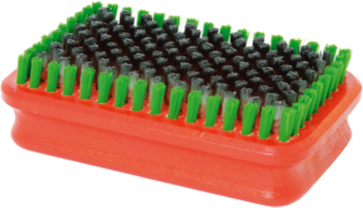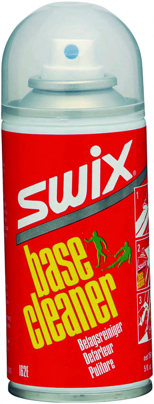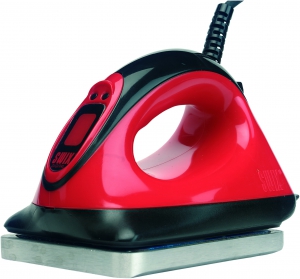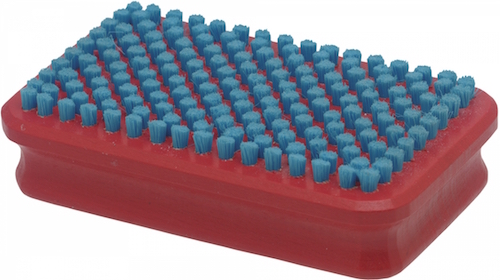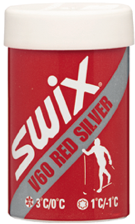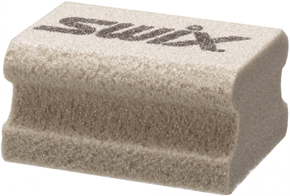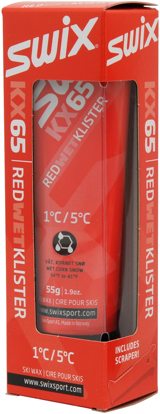Why do skis need to be waxed?
Skis can be waxed for three main reasons: to make them glide faster, to provide grip going uphills, and to keep them in good condition. If you take good care of your skis they will last longer and work better. It's like making sure you have enough oil in your car!
If renting waxless classic skis (see Equipment page for more details), then you probably don't need to worry about waxing at all. Even if you do want faster skis, either for a ski race or if conditions are really slow, the type of waxing that you'd likely use will be fairly simple.
Not Black Magic!
There are two types of waxing - glide and grip. With the correct tools and knowledge waxing skis for glide is fairly straight forward. Waxes are colour coded by temperature with details provided on the packaging. Just match the wax to the conditions and you're good to go! Grip waxing can be little trickier but the basic principles are the same.
For skating the whole ski is glide waxed. For classic waxing the middle section of the ski is grip waxed while the tip and tail are glide waxed. In addition to getting the right grip wax for the temperature and snow condition, the right amount of wax needs to be applied.
Cleaning skis and storage/travel waxing
Depending on the conditions ski bases tend to pick up a lot of dirt. This is all easily cleaned with a few basic care products. Base cleaner will remove all junk from your skis while a fine-steel brush will remove any particles left in the ski structure. Your skis are now clean!
After cleaning, skis should be glide waxed. This should also be done before any long distance travel or when packing them away after the winter. In addition to stopping the bases from drying out, it also protect against dents and scratches.
Glide Waxing
For basic glide waxing you will need an iron, wax scraper, groove scraper and brush. There are all sorts of brushes but a stiff nylon brush or soft brass brush will do the trick. A set of vices or a ski bench will assist to hold the ski in place.
Wax is melted into the skis, making sure the base doesn't get too hot. After cooling, the wax is scraped off then brushed so that the only wax left is invisible in the pores of the ski base. For Australian conditions common waxes are Swix CH8, LF8 or HF8, or Toko Yellow.
A simple but effective alternative for Australian wet conditions is to use a liquid wax like Swix F4 or Zadoz. Just wipe the wax on, let it dry, then polish it up. The wax may not last as long as most ironed-in waxes, but it's certainly enough for Interschools race distances
No-Wax Classic Skis
If you have your own no-wax classic skis the tips and tails should be waxed from time to time to stop them from drying out and keep them gliding well. No wax skis are classic skis that have a pattern e.g. fishscales or finish e.g. tiny bristles under your foot area that that provides grip. You only apply glide wax, the same way as you apply it on a skate ski, on the tips and tails of the ski.
Most recreational skis used in Australia are No Wax skis, as it saves you dealing with grip waxes (keep reading!).
Classic Waxing
Many skiers move into waxable classics especially if you get keen on racing, as they are generally a faster ski. The only difference between no wax skis and waxable skis is that you need to use grip wax instead of e.g. fish scales to provide grip on the ski.
At the most basic level all you need to do is apply a thin layer of grip wax which is simply rubbed on and polished smooth with a synthetic cork until almost nearly invisible. Repeat, coating with a total of 2-3 layers according to temperature. Sometimes a slightly colder first layer is used as it will make the wax last longer.
Klister is the most common grip wax used for Australian condiditons. It is used when snow doesn't have any snowflake structure left, either because it is old, melted or machine made. Warm the klister tube up and apply a thin line of klister on either side of the groove for the length of the grip zone. Use thumbs, palm or klister scraper to smooth the klister until there are no bumps and it is spread evenly.
To remove grip waxes you can spray base cleaner and let it sit for 1-2 minutes. Then use kitchen paper to wipe your skis and the wax will come off easily. A coarse nylon dish scourer and plastic scraper can also assist.
Some tips on how to wax your skis
• If new to waxing seek assistance from someone who knows what they are doing.
•Set the waxing iron to the correct temperature noted on the wax package.
• If a finger cannot be held onto the base of the ski immediately after running the iron over it, the iron is too hot or needs to be moved faster.
• There are no magic number of brush strokes you need to use once you have scraped your ski down - just try to get rid of all visible wax.
Want to know more?
These tips on waxing in Australia by Level 3 coach Bob Cranage have been around for years but are still very informative:
• General Rules to Assist in Choosing Wax for Cross Country Skiing
• Glide Waxing for Australian Wet Snow Conditions
Check out Swix Wax School for more information on waxing skis. There are even apps by e.g. Swix you can download that instruct you on how to wax your xc skis. Finally follow AUSXC.com and keep up to date on any waxing courses available.
